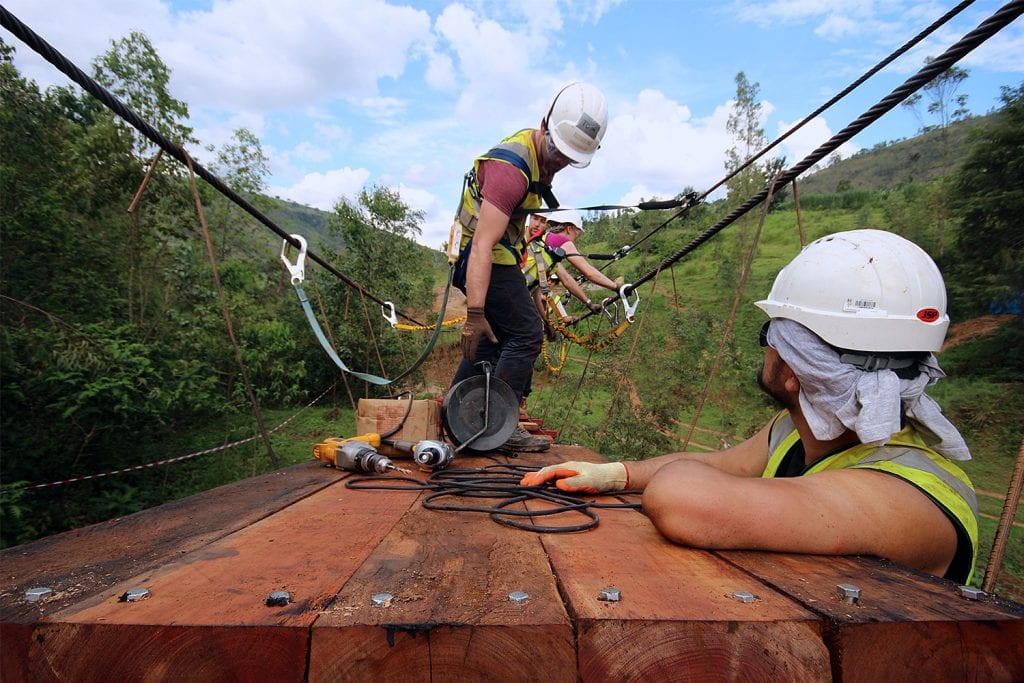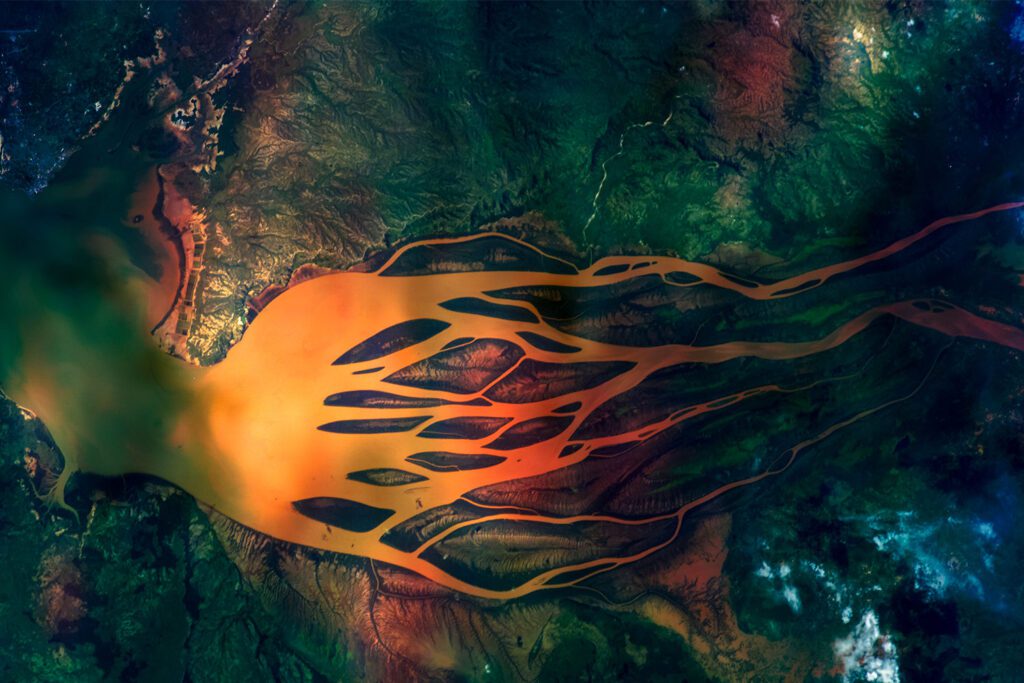

Our heritage
The story of Buro Happold
What began as a workforce of seven, more than 45 years ago, in the city of Bath, is now a business with over 2,500 employees in 37 different locations across the globe. Ted Happold, the founder of Buro Happold, had a vision for an interdisciplinary engineering team that could collaborate on projects that inspire people.
After working for Arup & Partners, succeeding at many collaborations, and becoming a highly respected engineer, in 1976, Happold decided to set up his own practice. With design inspiration from his close friend, Frei Otto, Happold gravitated towards minimalist, lightweight structures, which he navigated with his seven founding partners. Happold not only set the ball rolling to create incredible feats of structural engineering, he also established research into fields such as air-supported structures, which established a foundation for engineers to develop ideas upon.
“All of us are different, that’s why we chose to be together,” Ted Happold once said. “It is out of the different skills, the different bodies of knowledge we have, that the quality of what we do really comes through.”
Buro Happold was founded on the ethos that the diversity of skillsets within a team can create something spectacular. For more than 45 years, the company has worked on a vast array of innovative projects, inspired by the passions of the people who make up the business, providing sustainable and innovative creations.
Ted was an academic, practitioner, researcher, a networking genius and an industry spokesman.”
Derek Walker, Confidence to Build
Buro Happold through the decades
1970s

Buro Happold’s first project, Kocommass in Riyadh, Saudi Arabia, in 1976, was brought by Happold from Arup and helped to establish the practice. The project comprised of complex lightweight roofs, with minimalist Frei Otto thinking, creating an impressive first development.
Although the company’s early projects weren’t large in scale, with a group of bright engineers with good contacts, they swiftly became a reputable engineering firm.
Notably, their first key project involved rock stars. The Pink Floyd mechanical umbrellas, toured across the USA in 1977, creating a visual feast for concert-goers and foreshadowing the beginning of innovative tensile design for Buro Happold.
1980s
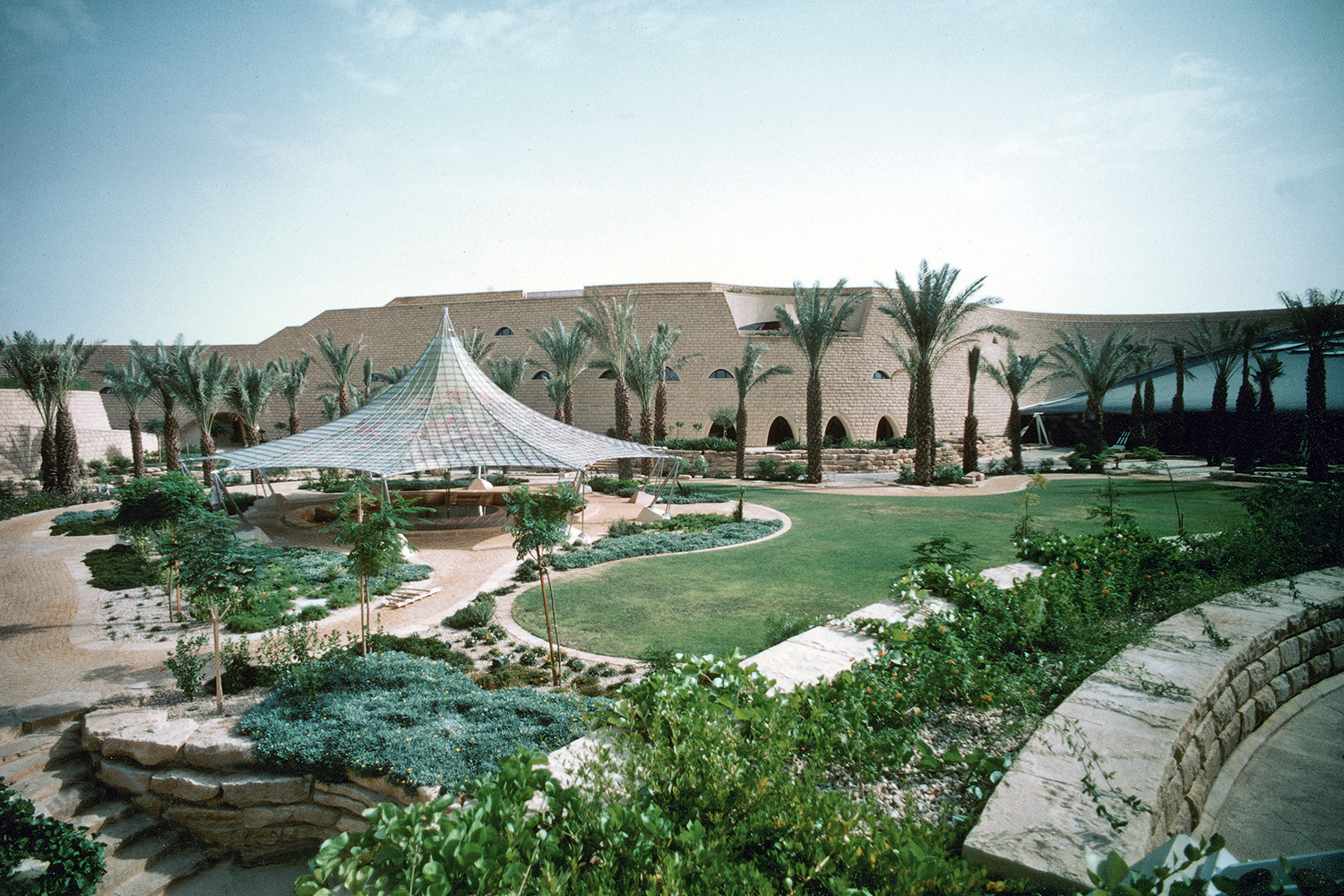
In the 1980s Buro Happold began to work on complex interdisciplinary projects, incorporating civil, structural and environmental engineering. The Tuwaiq Palace in Riyadh, KSA, has been noted as one of the most important buildings of its time and the first exhibition space that Buro Happold had worked on. Starting in 1981 and finishing the project in 1985, this was a major development for the practice and paved the way for future innovative opportunities.
The 1980s also opened new doors for international opportunities, working further afield in Hong Kong and an abundance of work in the Middle East. The Sabah al Ahmad Sea City in Kuwait was a landmark project for Buro Happold, which began in 1987. This is still an ongoing development, creating a vibrant space for more waterfront housing through the creation of an additional 180km of new beachfront development space.
1990s

Ted Happold sadly passed away in 1996, leaving behind a legacy, which still flourishes today. A year before his death he set up the Happold Foundation, a charity that would aim to “enable engineering to support the needs of our global society”.
Much like the business, the Happold Foundation has come a long way, and with the ongoing support from Buro Happold’s partners, the charity is able to reach people globally and make an impact on their lives.
A key project for Buro Happold in the 1990s was the British Airways Headquarters, Waterside in Heathrow, UK, finished in 1998. This was the firm’s first business park, which was designed as a home for the British Airways HQ. The campus style was significant in its time and provided a broad range of operational aspects.
This decade also saw Buro Happold’s expansion to continental Europe. The first location, in Berlin, opened its doors in 1995. Thanks to the commitment and endeavours of our people, we now have offices in Warsaw, Copenhagen, Munich and Rotterdam.
2000s
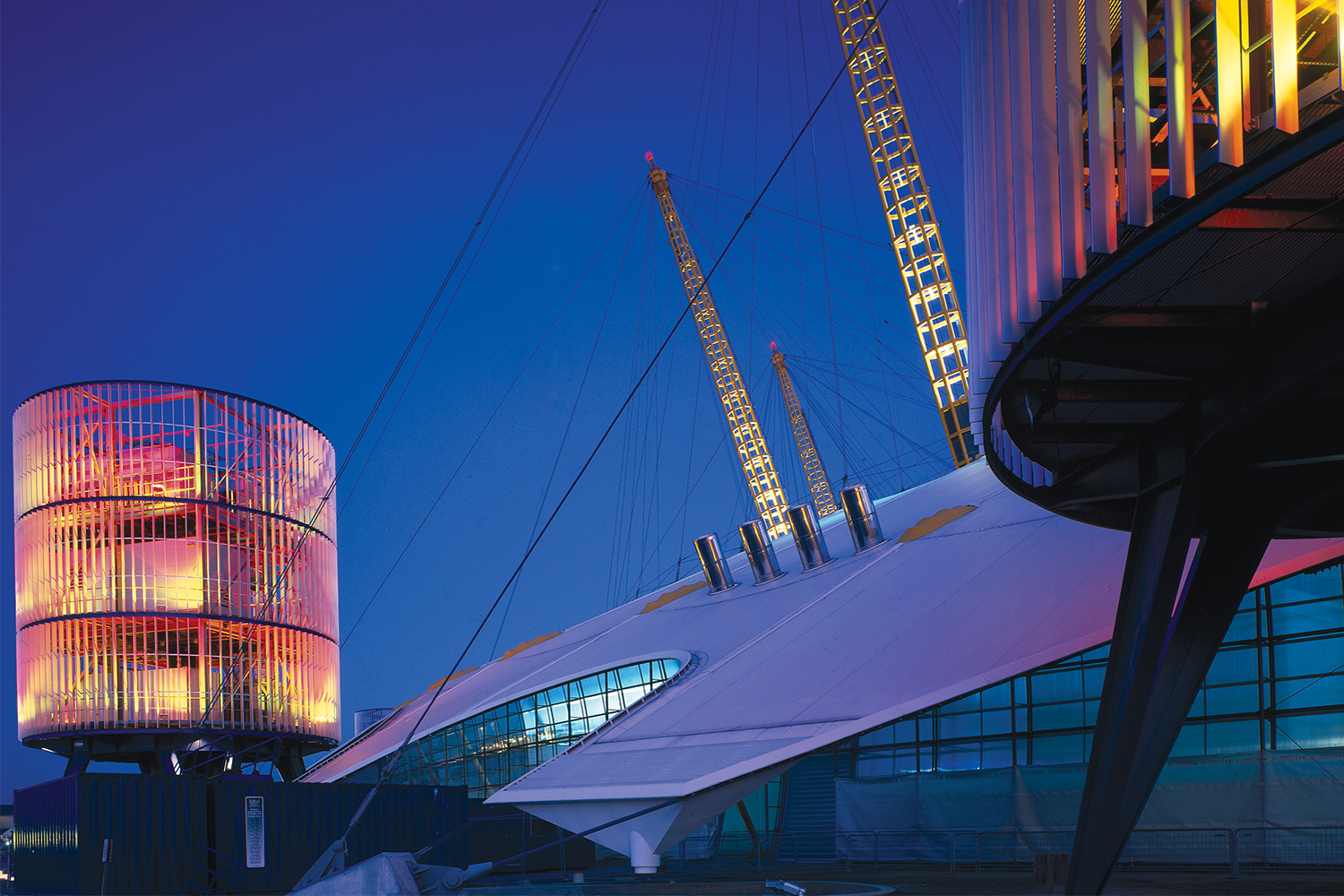
The new millennium brought bigger projects for Buro Happold, and some of the most impressive structural designs yet. The Millennium Commission, funded by the National Lottery, created opportunities for new projects in the UK such as The British Museum, The Lowry, and The Millennium Dome.
In 2000 Buro Happold worked on its first tower, The Al Faisaliah in Riyadh, which became a new landmark on the city skyline.
The decade also brought about regeneration projects including the complete redevelopment of Wadi Hanifah in 2001, which brought urban development to the fore, creating a greener public space on the edge of Riyadh.
The 2000s also saw the completion of one of Buro Happold’s most historically important projects, the Memorial to the Murdered Jews of Europe in Berlin. Completed in 2005, this project transcends national borders and is culturally and historically significant on a global stage.
In 2006 the business was involved in the redevelopment of the Royal Ascot Bandstand and Racecourse, which saw the creation of the “Finest racecourse in the world”.
The decade saw an increased focus on a more integrated approach, moving towards sports and exhibition venues. The practice gravitated towards high level performance structures that would enhance people’s lives and Buro Happold shifted the business to understanding the role of the engineer in a way that influences people and cities.
2010s
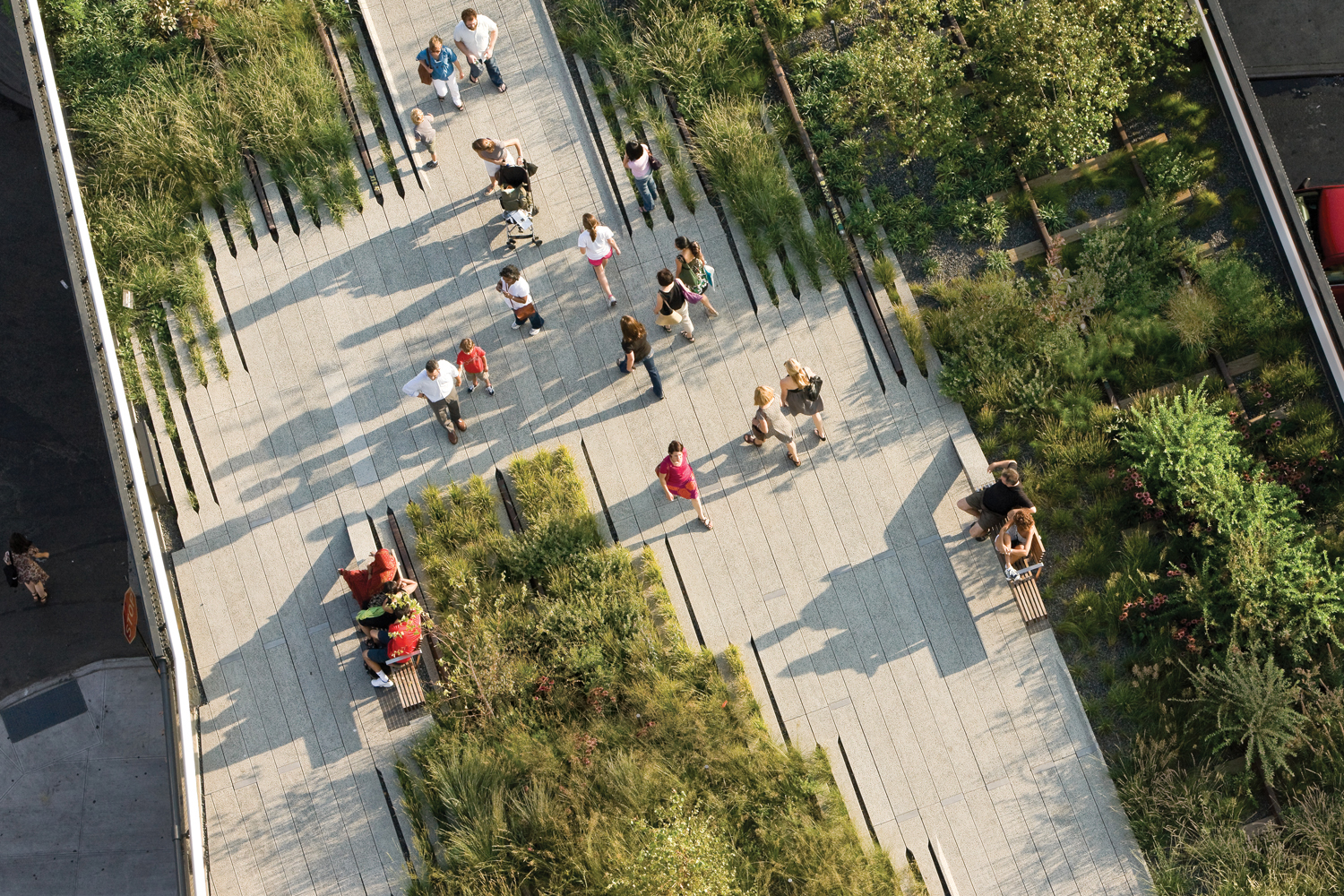
This decade featured many iconic projects of greater size and ambition. It also included many firsts for the company, including its first major cultural venue design at The Royal Shakespeare Theatre in Stratford Upon Avon, UK.
2011 also marked the completion of Buro Happold’s first Olympic venue, The 2012 London Olympic Stadium and Park. By using 4,000 tonnes of unwanted gas pipes found in a yard in Yorkshire, the project was delivered with a strong sustainability theme.
In 2014 the company revealed its first stranded asset project, The High Line in New York City, USA. This project oversaw the structural engineering of reusing an abandoned piece of infrastructure and regenerating it into a hotspot for locals and tourists alike.
In 2019, the Tottenham Hotspur Football Stadium became the talk of footballing fans and professionals across the globe. It is still recognised as one of the most impressive sporting arenas in the world and is a structural spectacle. In the same year, one of our most decorated projects was completed. The Lille Langebro bridge in Copenhagen has received six engineering awards.
2020s

The Museum for the Future, Dubai, was completed at the beginning of 2022 and has provided a groundbreaking home for showcasing the evolution of technology.
This challenging project embraced computational design and 3D modelling technology. BIM has also been a key part of the success of the project, empowering the communication between collaborators. The project also achieved LEED Platinum accreditation.
A lot has changed over 45 years at Buro Happold but Ted Happold’s legacy has paved the way for change and innovation, creating projects for the people. Padraic Kelly, a former Buro Happold CEO who worked closely with our founder Ted Happold, reminisces on how “Ted believed that all work should be of social value”. Buro Happold has been built on creating a positive and collective place of work to create shared experiences, to educate, enjoy and admire.


